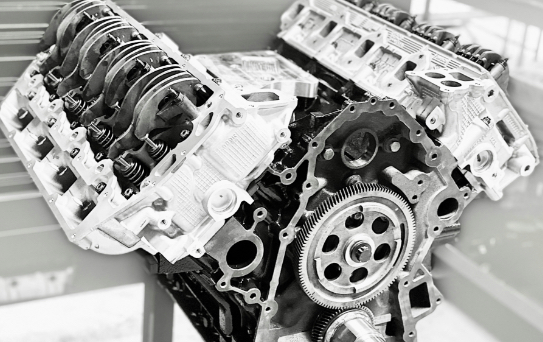If you’re eyeing a 6.0 Powerstroke, it’s crucial to approach your potential purchase with caution. The allure of the robust performance and torque is enticing, but the vehicle’s history can hold secrets that are less advertised. Understanding which model years to avoid can save you time, money, and a considerable amount of frustration. Let’s delve into the 6.0 Powerstroke years that buyers should tread carefully around.
The 6.0 Powerstroke diesel engine, manufactured by Ford, has garnered a notorious reputation. While many enthusiasts sing praises of its capabilities, there is a darker side hiding beneath the surface. Issues that arise from certain model years can transform your dream truck into an automotive nightmare.
First and foremost, let’s address the years that are famously associated with catastrophic failures and chronic reliability issues. The model years 2003, 2004, and parts of 2005 are where the seeds of disappointment were sown. The 2003 model, which heralded the introduction of the 6.0 Powerstroke engine, was innovative but riddled with teething problems. Among these were head gasket failures due to inadequate head bolt design, which subsequently led to coolant leaks and overheating. Imagine taking your new pride and joy out for a drive, only to be greeted with ominous dashboard lights that signify all is not well under the hood.
Fast-forward to 2004, where Ford attempted to rectify some of the shortcomings of its predecessor, yet many problems still lingered. Owners reported persistent problems with the EGR (Exhaust Gas Recirculation) system, which can lead to excessive soot buildup and further exacerbate the head gasket issues that plagued earlier models. For those inexperienced with diesel mechanics, the financial burden of repairs can be staggering. In this instance, what should have served as a reliable workhorse morphed into an unreliable behemoth.
In 2005, while Ford took steps towards improving engine design, the matter of reliability remained contentious. Many vehicles still bore the brunt of the early production issues. Although some owners reported satisfactory experiences, others recounted stories filled with close calls and repair shop visits that seemed like a recurring nightmare. The shadow of uncertainty loomed large over these earlier 6.0 Powerstroke engines.
However, not all is lost. Several model years did see enhancements that can provide a more favorable ownership experience. Models produced in 2006 through 2007 boasted improved components and manufacturing processes which significantly increased their reliability relative to their predecessors. By enacting changes to the EGR system and refining head gasket specifications, these years became more palatable choices for discerning buyers.
To truly grasp the 6.0 Powerstroke saga, it’s essential to also evaluate how maintenance practices play a pivotal role in determining a truck’s fate. The vehicle’s propensity to accumulate issues can often be traced back to neglect rather than design flaws. Owners who engaged in timely maintenance, diligent oil changes, and comprehensively monitored their cooling systems often reported significantly fewer performance issues. When considering a used 6.0 Powerstroke, it’s vital to scrutinize maintenance records and talk to previous owners to gauge if diligence was a priority.
Another significant aspect to consider is the choice of modifications. While turning a stock engine into a powerhouse might sound appealing, modifications can lead to complications if not executed judiciously. Many past owners adhere to a “bigger is better” philosophy that can inadvertently net them a host of issues. Turbo upgrades, for instance, can induce excessive strain on an engine already susceptible to failure if not matched correctly. If you come across a modified truck, due diligence is paramount to ascertain whether the enhancements were performed professionally or haphazardly by a well-meaning but uninformed enthusiast.
For potential buyers, exploring the aftermarket support for the 6.0 Powerstroke is invaluable. A sea of forums, parts suppliers, and mechanic shops specialize in these engines, providing an extensive network of resources geared towards modifications and repairs. Leverage these communities—for they can impart vibrant stories, cautionary tales, and recommendations that may tilt your purchasing decision in favor of or against a specific model year.
Ultimately, when embarking on the journey to become the proud owner of a 6.0 Powerstroke, knowledge is power. Understanding which years to avoid equips you with the insight necessary to make an informed decision. Remember, the allure of a beastly truck comes with the caveat of hidden hazards. To navigate safely through the enticing yet tumultuous waters of the 6.0 Powerstroke market, do your homework, consult multiple resources, and consider the experiences of fellow enthusiasts. Your dream truck may yet await, lurking just beyond the shadows of disreputable years.
So, are you ready to wield your newfound knowledge as a tool in your truck-buying quest? Approach with caution, heed the advice of those who’ve traversed this path before you, and safeguard yourself from the potential pitfalls of the 6.0 Powerstroke. Happy hunting!
